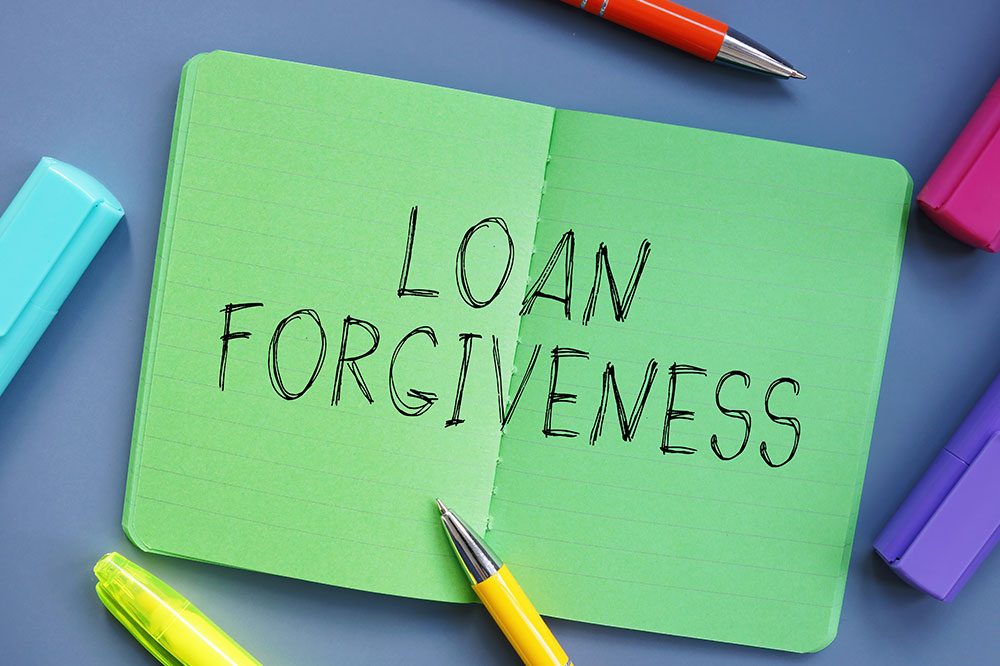IRS Debt Forgiveness Program – Features, Eligibility, and Application
Millions of people in our country owe taxes, interest, and penalties to the Internal Revenue Service (IRS). Although there is no way to cancel these dues entirely, the IRS offers a debt forgiveness program to help individuals and businesses lower their tax debts and repay them gradually. The program can help you bounce back on your feet and move toward financial freedom. Scroll down to learn more about this program and how to apply!

What is a debt forgiveness program?
Failing to pay your tax debt can result in a series of consequences, including higher interest, penalties, and the seizure of assets. In severe cases, the IRS may even pursue legal action against tax defaulters, resulting in criminal charges or wage garnishment. Here is where a debt forgiveness program helps.
The IRS tax debt forgiveness program includes numerous relief options for taxpayers who cannot pay their taxes on time. Opting for the program will significantly reduce or even cancel your debt. While the IRS can be aggressive with debtors, they also understand that some individuals have legitimate reasons why they cannot clear their outstanding taxes.
What are the relief options under the program?
If you cannot clear your tax dues in full, you may opt for various relief options under the IRS debt forgiveness program in 2023. Examples are the fresh start initiative, offer in compromise, currently not collectible, and installment agreements. Let us take a closer look at each option:
Offer in compromise
Taxpayers can opt for this relief option if it is impossible for them to pay their entire tax debt. The IRS reviews the applicant’s financial data, including their assets, income, expenses, and other obligations. If satisfied, the agency reduces the amount payable to relieve the business’s or individual’s financial burden. Offer in compromise is among the most popular tax relief options.
Currently not collectible
This is an excellent alternative to an offer in compromise. Under this program, taxpayers must prove they cannot pay taxes due to their current financial condition. Upon approval, the taxpayer’s accounts will be shown or tagged as being non-collectible. It implies that the IRS cannot demand payment or seize the applicant’s assets until they are financially steady again.
Installment agreements
It is one of the simplest yet most common relief options. If you cannot clear your entire pending tax bill, this program will allow you to pay smaller installments spread over a fixed period (maximum 72 months). However, you will have to clear your dues with interest.
Fresh start initiative
Fresh start is not a debt forgiveness program but a set of reforms the IRS has made to the country’s tax system to reduce the financial burden on individuals and businesses. Thanks to this initiative, we now enjoy the following benefits:
- An increased tax threshold of $10,000 for filing a federal tax lien
- Provision for those with less than $50,000 in debt to set up streamlined installments
- Provision to obtain a lien withdrawal once the balance is paid in full
Who can apply for a debt forgiveness program?
The IRS debt forgiveness program simplifies debt payments and supports people who owe a significant amount in taxes. Although any defaulting taxpayer may apply, only those who meet the eligibility criteria receive the benefits. The IRS analyzes every application carefully and assesses the applicant’s financial status before approving or rejecting the request. Individuals who are facing financial difficulties currently but have filed their previous tax returns on time are most likely to see their applications accepted.
While the eligibility criteria may differ for every relief option, the following groups of taxpayers are likely to qualify:
- Individuals who have a debt amount of $50,000 or less
- Individuals earning less than $100,000 ($200,000 for married couples)
- Self-employed individuals with a recent drop in income of over 25%
The amount of debt to be forgiven will be calculated based on the individual’s financial circumstances and chosen payment plan.
How to apply for debt forgiveness?
You must visit the IRS’s official website and submit the relevant debt forgiveness application form. The form to be filled can vary depending on the relief option you are applying for and whether you are applying as an individual or a business. Be honest will filling out information about your financial situation, income, expenses, and assets. You may also have to pay a nominal application fee.
The IRS can levy massive penalties if you fail to pay your taxes, but they also offer a solution to those experiencing financial difficulty. So, ensure to visit the agency’s website and learn more about their debt forgiveness program. Remember that every relief option under the program has its own set of eligibility requirements. Working with a tax professional will help you meet the eligibility criteria and make the most of the available relief options and benefits.